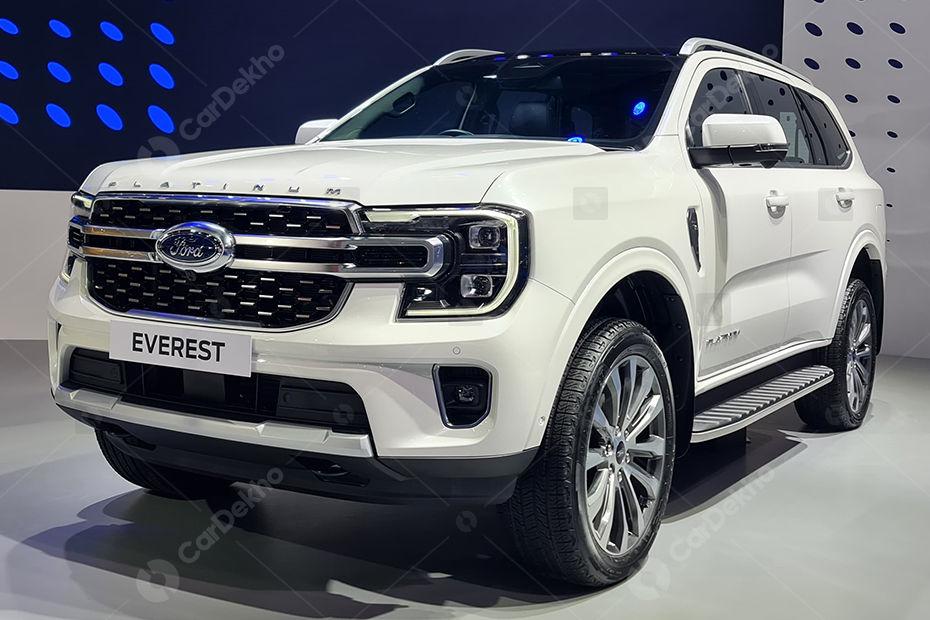5 Cars That Were Way Ahead Of Their Time But Made Way For The Future
Modified On Apr 20, 2023 07:28 PM By Tarun
- Write a comment
These cars weren’t popular when they debuted but their idea paved the way for new segments, designs, and even popular models

Nowadays, we see many small cars with the idea of small-capacity turbo-petrol engines. Small turbo units give the extra punch while being easy on fuel expenses. Ever wondered how this process got mainstreamed?
Many of such segments and design languages were revolutionized by cars which failed to make a mark several years back. Here are five such cars which were way ahead of their time and thanks to them, we now have a barrel of options:
Ford Ecosport Ecoboost
Made Way For Small Capacity Turbo-Petrol Engines

The Ford Ecosport kickstarted the subcompact SUV trend, back in 2013. What caught our eye was the small 1-litre turbo-petrol Ecoboost engine. 123 horsepower and 170Nm of torque were surprisingly good figures from a 1000cc three-cylinder engine. It was engaging and smooth to drive as well. When driven spiritedly, the fuel economy was said to dip down quickly and a 1-litre engine for an SUV gave people the idea of it being underpowered. As a result, this engine was never a good seller for the Ecosport.
Now, small-capacity turbo-petrol engines, including 1-litre and 1.2-litre units, have flooded the market with cars priced around the Rs 10 lakh mark. As a result, the buyers aren’t shying away from turbo-petrol cars these days, because they offer good performance with premium automatic transmissions. The Venue and i20 N Line from Hyundai, Sonet from Kia, Fronx from Maruti, Altroz and Nexon from Tata, and Kiger and Magnite from Renault and Nissan are some examples.
Tata Sierra
Made Way For Indigenous Lifestyle Vehicles

Tata brought the macho-looking Sierra back in the early 90s. It was the Indian carmaker’s first passenger car, but at a price of around Rs 5 lakh, it wasn’t your regular budget car. A two-door lifestyle SUV wasn’t well perceived at that time when cars for Indian buyers strictly meant - PRACTICALITY and EFFICIENCY. This meant it was just too futuristic for its time.
Lifestyle vehicles are much more welcome in the current times. Buyers are ready to shell over Rs 20 lakh for a Thar and even close to Rs 40 lakh for a pickup Toyota. Incidentally, Tata is also bringing back the Sierra in EV and ICE versions. With an expected price of under Rs 20 lakh, it can be a better and more popular offering than its predecessor.
Hyundai Getz
Made Way For Small Hatchbacks With Powerful Engines

Hyundai Getz debuted in 2004 as a costlier alternative to the Santro. With some posh features and a stylish design, it was positioned as a premium hatchback. Many won’t know but it was the first diesel hot hatch on sale. The Getz was plonked with a 1.5-litre diesel engine which claimed an astonishing 110PS with wheel spins even in the second gear! For a small hatchback, over 100PS sounded interesting, that too from a diesel car. However interesting and desirable it may sound now, the Getz and neither its diesel engine did well when they were on sale.
However, the idea of powerful small hatchbacks went ahead and was much appreciated by buyers. A 100+PS hatchback is very common these days because performance on a budget is somewhat what the younger generation desires nowadays. Hatchbacks like the Volkswagen Polo GT, Tata Altroz Turbo, Hyundai i20 Turbo, and Maruti Baleno RS could be had in the 10 lakh budget.
Ford Fusion
Gave The Hatchback-SUV Crossover Design Language

The idea of an hatchback-SUV fusion design was first seen in 2004, on the Ford Fusion. It had an upright stance and good ground clearance of an SUV, but it was short and had the silhouette of a hatchback. This styling was unique and since it was priced around Rs 6 lakh, it was seen as a costlier and bulkier-looking alternative to the Maruti Swift. However, it didn’t go well with buyers possibly because it looked too small for an SUV and too big for a hatchback.
Now, two decades later, SUV-hatchback crossovers are the trend. People fancy the compact footprints of a hatchback with the tall height, higher sitting position, and chunkier wheels of an SUV. All the subcompact SUVs like Hyundai Venue, Tata Nexon, and Nissan Magnite you see are essentially SUV-hatchback crossovers and are currently among the most popular choices in India.
Also Read: Remembering Ford Endeavour: One Of The Best SUVs That We Had
Maini Reva
Made Way For Compact EVs Meant For Urban Runs

The first electric car in India came all the way back in 2001. The Maini Reva was launched as a two-door compact electric hatchback for an affordable price of around Rs 2 lakh. It was seen as a game changer and was on its way to become a mass-market product. With a range of under 100 kilometres, it was touted as a pure city runabout.
However, the lack of awareness for EVs among people and the impracticality of a two-door car and quirky design didn’t work well at that time. Now, we see, carmakers focusing on small EVs like Tata Tiago EV, Tigor EV, and Citroen eC3 with the same base principle of the Reva - small footprint and ease of use. If the Reva had come with improved build quality, better battery technology and more range, it could have been much more popular. Now, the MG Comet EV is arriving with the same ideals.
2 out of 2 found this helpful















